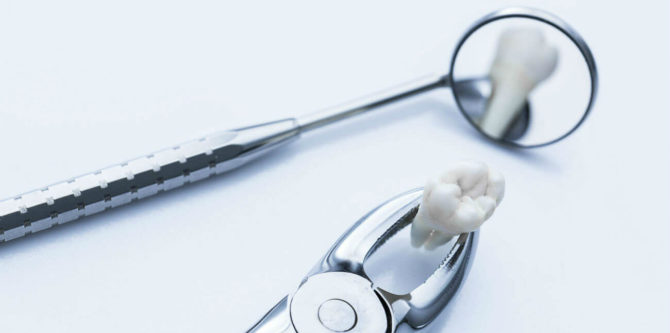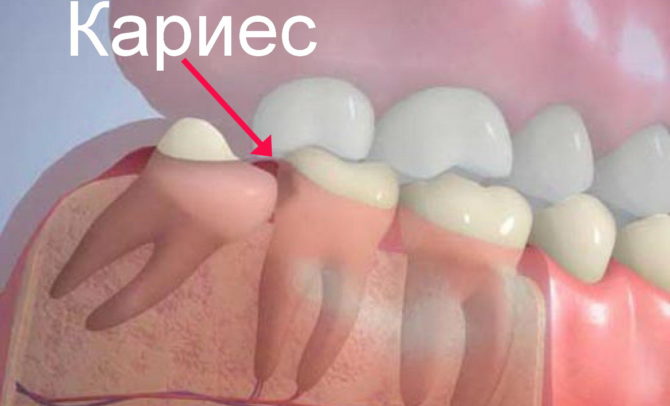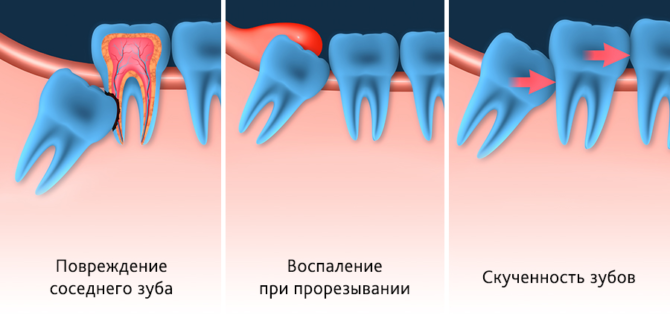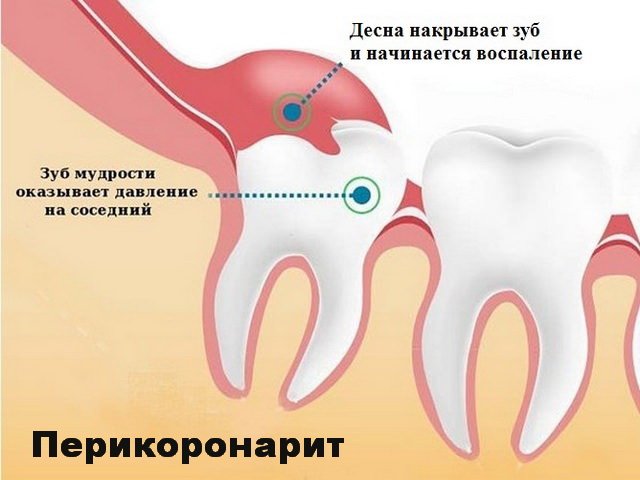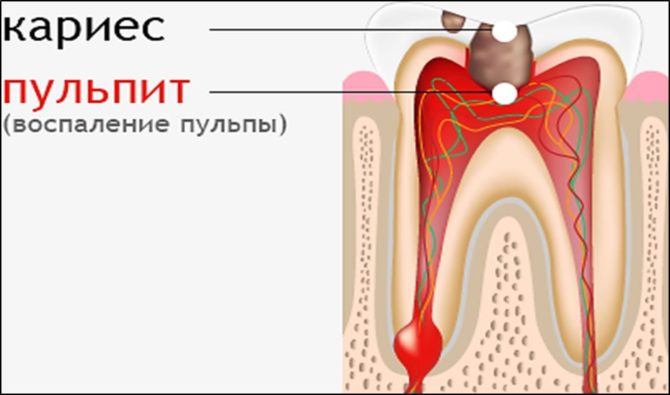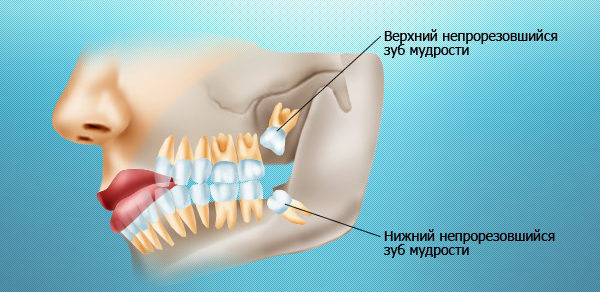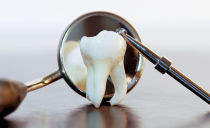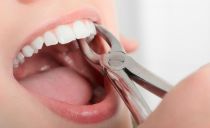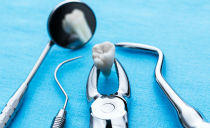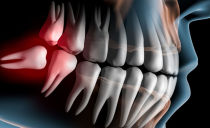Is it necessary to remove wisdom teeth: why and in what cases do they remove
Wisdom teeth do not carry a functional load, and their removal does not have aesthetic consequences. There is a lot of controversy among dentists about whether it is necessary to remove wisdom teeth immediately after eruption or whether it is better to treat them like others, only to tear out if absolutely necessary.
The safest and most rational dental approach is to monitor the condition of the third molar from the moment of eruption. An initial x-ray will allow the doctor to evaluate the features of the development of the eighth tooth, and scheduled visits to the dentist 2 times a year will allow you to identify the problem in time and, if necessary, remove the problem rudiment.
Content
- Does a person need wisdom teeth, or is it better to remove them
- In which cases a healthy wisdom tooth is removed
- Indications for the removal of a problem wisdom tooth
- Why remove uncut wisdom teeth
- Is it always possible to remove a wisdom tooth
- Why leave a wisdom tooth
- Contraindications to the removal of eights
Does a person need wisdom teeth, or is it better to remove them
In Western dental practice, the removal of eights is accepted immediately after eruption. But not always third molars hurt or become a source of problems, therefore decide whether to remove the wisdom teeth, if they do not hurt and do not bother, you can only discuss all the nuances with the doctor. Domestic dentistry insists that there must be a foundation for the removal of any tooth, including the eights. Otherwise, the pain, costs and consequences of the removal may be unjustified.
The argument in favor of the removal of eights immediately after these teeth erupted is the lack of functional load, as well as the potentially high risk of caries and infection of neighboring molars.
In the event that the molar develops normally, occupies an anatomically correct position, does not bother a person and is not affected by caries, pulling it out in order to avoid hypothetical problems in the future is not practical.
Why it is not necessary to remove a correctly erupted wisdom tooth:
- Due to the peculiarities of the structure of wisdom teeth, their removal is a complex surgical operation and can lead to unpleasant consequences and complications.
- Wisdom teeth are needed for prosthetics, they are a good basis for installing a number of dentures that are attached to natural teeth. Such prosthetics are cheaper than implants, therefore, the preservation of eights may be useful in the future.
- The figure of eight restrains and slows the loosening of adjacent teeth, and in their absence takes on chewing function.
In which cases a healthy wisdom tooth is removed
If an abnormal position of the rudiment is detected, the doctor may recommend removing the figure eight even when the tooth itself is perfectly healthy. Extraction is done in the presence of direct indications, which are:
- Lack of space in the dentition. If, during the eruption of eights, they do not have enough space in the jaw row, they shift neighboring molars to the center. This leads to crowding, deformation and tooth displacement. The consequence may be malocclusion.
- Incorrect anatomical position in a row. Sometimes a tooth erupts with an inclination towards the cheek, tongue, and throat. In this situation, the mucous membranes of the oral cavity are constantly injured, irritation occurs, and the patient cannot brush his teeth qualitatively. Chronically non-healing wounds turn into ulcers.
- Destruction of a neighboring molar. An incorrectly located third molar can rest against the roots or crown of a neighboring molar; under constant pressure, it gradually collapses and becomes inflamed.
- Retention (teething delay). The formed tooth is completely hidden in the gum and occupies an abnormal position inside. Pathology is fraught with constriction of the trigeminal nerve.
- Installing a brace system to correct a bite. Releasing the space after the eights are removed helps return the dentition to its correct position. Whether it is necessary to remove wisdom teeth before orthodontic treatment, or should not be done, the doctor can determine only after examination.
Indications for the removal of a problem wisdom tooth
The bone tissue of the extreme molars is no different from the tissues of other indigenous molars, therefore wisdom teeth are also subject to treatment. The difficulty lies in the fact that the eights have a more complex structure, often burdened with multiple roots, larger sizes and an unfavorable arrangement for dental procedures. Diseases at the initial stages in most cases can be stopped, but treatment of advanced forms of the disease is difficult.
The treatment of eights takes longer than the treatment of other teeth, in complex cases it can last up to three months.
The greatest difficulty is the treatment of pulpitis and periodontitis, during which processing of the channels is required. With inflammatory diseases, dentists more often decide to tear out a wisdom tooth than try to cure it. The main indications for the extraction of the eight are:
- extensive carious lesion with significant destruction of the dental crown;
- inflammation of the periodontium - pericoronitis, pulpitis, periodontitis on the background of obstruction of the canals;
- cyst;
- neoplasm development;
- destruction of bone tissue;
- softening of the root system;
- fracture;
- root bifurcation disorder;
- sinusitis;
- sepsis;
- osteitis of the jaw;
- horizontal position of the inflamed figure eight.
Extensive caries
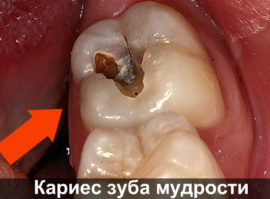 The inaccessibility of third molars makes complete hygiene difficult. Thoroughly cleaning them with an ordinary toothbrush is difficult, the result is stagnation of food particles and the development of pathogenic microflora. The insidiousness of caries on eights lies in the fact that it is rarely possible to diagnose it at the initial stage of the disease. It often develops from the inside, and visually the tooth looks completely healthy for a long time.
The inaccessibility of third molars makes complete hygiene difficult. Thoroughly cleaning them with an ordinary toothbrush is difficult, the result is stagnation of food particles and the development of pathogenic microflora. The insidiousness of caries on eights lies in the fact that it is rarely possible to diagnose it at the initial stage of the disease. It often develops from the inside, and visually the tooth looks completely healthy for a long time.
When the “wise” tooth is inclined, additional carious foci appear in the cracks between it and the neighboring molar, and the infection spreads even faster. Do you need to remove the wisdom teeth affected by caries, or can they be cured, the doctor decides based on the degree of destruction of the dental tissue, the condition of the canals and the possibility of full access.
Pericoronitis
When teething wisdom tooth over it often forms a kind of hood made of gum tissue. As a result, it is difficult to clean the molar, since it is impossible to clean the space between the mucosa and the tooth with a toothbrush. To qualitatively clean the space under the hood, you need to resort to rinsing or the use of special devices.
Due to poor hygiene, a plaque forms on the molar, which becomes a breeding ground for pathogens. This can lead to pericoronitis - purulent inflammation of the mucous membranes. Symptoms of the disease are swelling, discomfort when swallowing, the appearance of halitosis and severe pain.
To prevent the development of pericoronaritis during the eruption of the figure eight, an overhanging hood is excised. If the inflammatory process has already begun, the hood must be removed surgically. After the operation, oral sanitation and treatment are performed.If you do not clean the formed cavity and start inflammation, phlegmon and abscess may develop - inflammatory processes that are dangerous for the whole organism.
Cyst
One or more follicular cysts can form at the roots of the retarded wisdom teeth, which pose a serious health hazard. As they increase in size, they can do more and more harm.
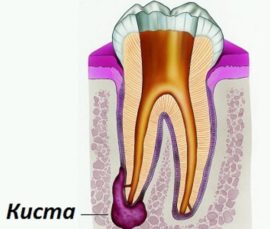 The proliferation of cystic formations occurs slowly, but it is very dangerous - that is why it is necessary to remove wisdom teeth affected by cystic formations as soon as possible.
The proliferation of cystic formations occurs slowly, but it is very dangerous - that is why it is necessary to remove wisdom teeth affected by cystic formations as soon as possible.
A complication of a follicular cyst can be:
- purulent sinusitis (with the germination of a cyst in the maxillary sinus);
- development of perineuritis;
- chronic inflammation and suppuration;
- fistula;
- osteomyelitis.
The development of inflammatory processes in the pulp
Inflammation in the pulp itself is not a reason to remove a wisdom tooth. It can be cured, but this can only be done on condition that the figure eight is correctly positioned and has even channels. In the case of obstruction of the channels, leaving wisdom teeth will not work - they must be torn out.
Strongly curved channels will not allow you to get to the problem areas and perform a full cleaning of the pulp from infection. If the canals are not completely cleaned, the inflammatory process resumes and spreads to adjacent tissues - this is why the condition of the canals is a paramount issue when choosing between treatment and extraction.
Why remove uncut wisdom teeth
Extreme molars are characterized by the phenomenon of retention (teething delay), in which not only the discomfort typical of the gum cutting can occur, but also a constant throbbing pain, which intensifies when chewing and during a conversation. If the doctor sees a molar formed on the x-ray, the eruption of which has not yet occurred, he will decide on the need to remove the figure eight. To do this, he will need data on the condition of the molar and gums, the patient’s health. A comprehensive examination will help identify the potential threat of complications.
When the figure eight does not bother, the gum near it is not inflamed, the molar does not adversely affect the surrounding tissues and, presumably, will stand in a normal position, it is not necessary to remove the wisdom tooth. Doctors recommend observing it in dynamics, visiting dentistry once every six months.
It is urgent to “clean up” the refined molar when:
- tooth and surrounding tissues hurt;
- there are acute and chronic inflammations;
- a cyst develops.
Is it always possible to remove a wisdom tooth
Treatment of third molars is difficult and not always justified, but tearing out is not a panacea. It carries operational risks and consequences. In order to make an informed decision about whether it is necessary to remove the eights or whether they can be cured with high quality, the doctor must take into account:
- degree of damage;
- the anatomical position of the tooth and the condition of the canals;
- the presence of an inflammatory process;
- the influence of the figure eight on adjacent teeth;
- history and state of human health.
Why leave a wisdom tooth
In case of dental diseases of wisdom teeth, it is not always recommended to tear them out; in some cases it is better to choose a treatment, even if it will be very long and expensive. Treatment of the third molar is advisable if:
- Nearby molars are absent or severely damaged, then eights become the only possible support for prosthetics. If they cannot be left, dentists are considering implantation and removable prosthetics.
- The figure eight is correctly located in the jaw row and, thanks to the presence of an antagonist, is involved in the chewing process. An antagonist is a tooth located symmetrically on an adjacent jaw.When removing one of the teeth of the antagonists, the second will gradually extend and curvature, so it is advisable to leave the tooth or to extract both molars.
Contraindications to the removal of eights
There are a number of indications in which it is not necessary to remove a wisdom tooth unless absolutely necessary - a rapidly spreading inflammatory process in an acute form that causes severe pain. It:
- Tooth growth in the area of malignancy.
- Hypertension of the second and third degree. If surgery is unavoidable, it can only be done after consultation with a cardiologist.
- A history of heart attack less than three months ago.
- Pregnancy. If there are indications for emergency extraction, before removing the wisdom tooth, the doctor must take care of a suitable anesthetic that will not harm the child.
If you experience the first unpleasant symptoms in the area of eights, you should consult a dentist who can determine the source and cause of the pain, choose the optimal treatment tactic, and determine whether to leave a problem tooth or if it is better to pull it out. A qualified doctor will explain why this or that decision is made, and will help you choose the best option for its implementation.

